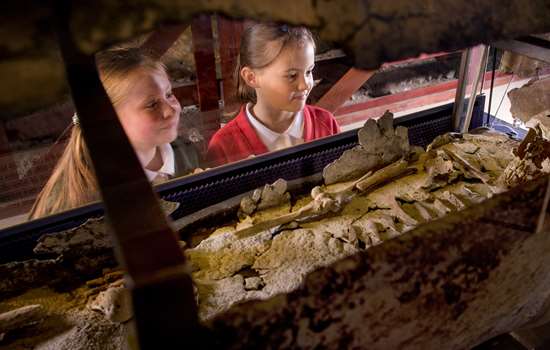Glossary
Below is a list of words you might come across while exploring Lullingstone Roman Villa and the Darent Valley. Use this Glossary to find out what they mean.
Explore the Collection
We've created 3D scans of some of the objects found at Lullingstone Roman Villa to help you explore life in Roman Kent.
Take a closer look at bowls, jars, pawprints, axle caps and more at home or in the classroom.
View the 3D imagesLink Your Learning
ENGLISH - Find out more about life in Roman Kent by exploring the maps and write a newspaper interview with someone living at a villa or settlement in the Darent Valley during the Roman period. Include details about where they live, the job they do and what their daily life is like.
SCIENCE - Research the different animals found in the Darent Valley in Roman times and today using the Geographical Features and Landscape map. Choose a species and outline the features and characteristics it has that makes it well-suited to it's natural environment or its work on a Roman farm.
MATHS - Become more familiar with Roman numerals. Challenge a partner by swapping simple sums or more complex problems, substituting in Roman numerals for each of the numbers to test your learning.
GEOGRAPHY - Reflect on the locations of archaeological sites in the Darent Valley. Are there particular features that the Romans wanted to build their villas near to or away from? You could also compare the geography of Roman Kent and the geographical features found in Kent today. How have roads, farms and settlements changed over time?
ART AND DESIGN - Use the architectural features and interior decorations that archaeologists have found in the Darent Valley to design your own Roman room or villa. You could use the images, reconstructions and plans within the Settlements and Buildings map to help you.
DRAMA - Search the Industry, Crafts and Skills map to find out more about different jobs in Roman Kent. You could research particular roles and act these out in a short performance, freeze frame or mime.
Visiting Lullingstone Roman Villa
Bring the Romans to life during a school trip to Lullingstone Roman Villa. During a free self-led visit you can find out more about the mosaics, artefacts and villa remains on display.
Our expert-led Discovery Visit session is a great way to delve deeper into the history of the villa and find out more about the people who lived and worked there, through role play and object handling.
Find Out MoreOur Partnership
English Heritage and The Kent Downs National Landscape worked together to create this interactive resource with support from the National Lottery Heritage Fund.
The Kent Downs National Landscape aims to conserve and enhance the distinctive heritage landscape of the Darent Valley and reconnect people with this unique landscape.
Other Useful Links
You can find out more about the Darent Valley during the Roman period and other heritage sites in Kent in the following places:





